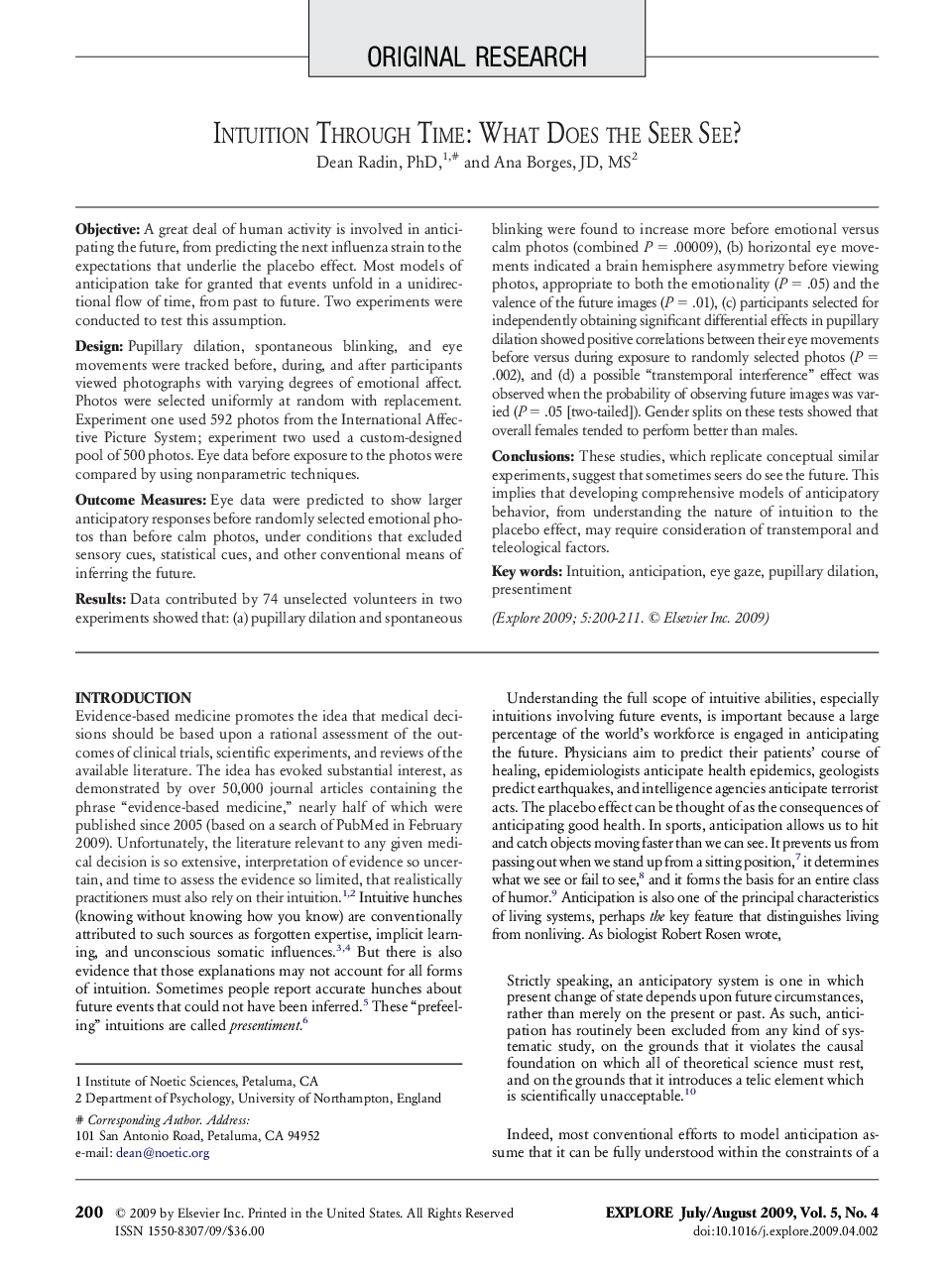| کد مقاله | کد نشریه | سال انتشار | مقاله انگلیسی | نسخه تمام متن |
|---|---|---|---|---|
| 2692351 | 1143427 | 2009 | 12 صفحه PDF | دانلود رایگان |

ObjectiveA great deal of human activity is involved in anticipating the future, from predicting the next influenza strain to the expectations that underlie the placebo effect. Most models of anticipation take for granted that events unfold in a unidirectional flow of time, from past to future. Two experiments were conducted to test this assumption.DesignPupillary dilation, spontaneous blinking, and eye movements were tracked before, during, and after participants viewed photographs with varying degrees of emotional affect. Photos were selected uniformly at random with replacement. Experiment one used 592 photos from the International Affective Picture System; experiment two used a custom-designed pool of 500 photos. Eye data before exposure to the photos were compared by using nonparametric techniques.Outcome MeasuresEye data were predicted to show larger anticipatory responses before randomly selected emotional photos than before calm photos, under conditions that excluded sensory cues, statistical cues, and other conventional means of inferring the future.ResultsData contributed by 74 unselected volunteers in two experiments showed that: (a) pupillary dilation and spontaneous blinking were found to increase more before emotional versus calm photos (combined P = .00009), (b) horizontal eye movements indicated a brain hemisphere asymmetry before viewing photos, appropriate to both the emotionality (P = .05) and the valence of the future images (P = .01), (c) participants selected for independently obtaining significant differential effects in pupillary dilation showed positive correlations between their eye movements before versus during exposure to randomly selected photos (P = .002), and (d) a possible “transtemporal interference” effect was observed when the probability of observing future images was varied (P = .05 [two-tailed]). Gender splits on these tests showed that overall females tended to perform better than males.ConclusionsThese studies, which replicate conceptual similar experiments, suggest that sometimes seers do see the future. This implies that developing comprehensive models of anticipatory behavior, from understanding the nature of intuition to the placebo effect, may require consideration of transtemporal and teleological factors.
Journal: EXPLORE: The Journal of Science and Healing - Volume 5, Issue 4, July–August 2009, Pages 200–211